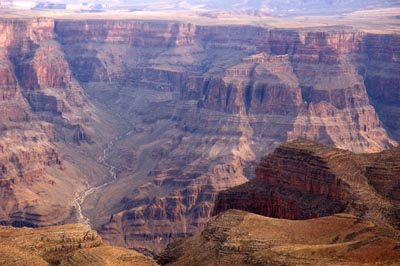 The Grand Canyon is, as American writer John Stoddard once said, a “stupendous gorge”. At 277 miles long, as much as 18 miles wide, and an average depth of one mile, it’s considered the seventh wonder of the world. National Geographic says you could take the water from every river in the world and it would only fill the Grand Canyon half full.
The Grand Canyon is, as American writer John Stoddard once said, a “stupendous gorge”. At 277 miles long, as much as 18 miles wide, and an average depth of one mile, it’s considered the seventh wonder of the world. National Geographic says you could take the water from every river in the world and it would only fill the Grand Canyon half full.
Unfortunately, every new product has to cross two Grand Canyons in a journey to be successful in market.
The first grand canyon comes when a business is faced with generating an idea and turning it into a great new product. Businesses study market and consumer trends, conduct ethnographies, talk to consumers, hold ideation sessions, study usage, look for market discontinuities, identify consumer problems to solve. Consumer products companies spend an average of 7-9% of revenues just on research. In all, that’s billions and billions of dollars. In the CPG industry where tens of thousands of new products are introduced every year, only a small fraction of the original ideas became viable concepts and only 1 in 10 viable concepts made it through development to the marketplace. That means the successful new product “yield” on the 7-9% research investment is often miniscule. Getting across this canyon requires you really know what you’re doing (like these people), or your ideas end up in the first “stupendous gorge”.
But there’s more bad news: there’s a second grand canyon. Of the tens of thousands of new products that actually make it to market, only 2% are around 3 years later. And often, they only last that long because of the marketing support propping them up to create “news” in the category. Sure, many are bad new products to begin with. And some industries have short product life cycles. But it is also apparent many good new products fail because they lack a viable business model to succeed. Book Stacks Unlimited was the first online bookstore fully two years before Jeff Bezos started Amazon.com. Napster had the digital music idea but Apple built the successful business model to deliver both consumer value (a 99 cent price for my favorite song!) and economic value for the company.
Not only should a business invest in developing great new products, they should make sure they support them with great business models. A new product business model assessment starts with the new value proposition and then reviews each of the appropriate major components of the supporting business model. A small investment in assessing the business model to be used for executing new products will increase the yield on those billions of dollars spent bringing new products to market.
Without a good business model, companies will fail to deliver new product value to the consumer or economic value for the company or both. The second chasm is too great to leap and great new products will end up in the second “stupendous gorge”.